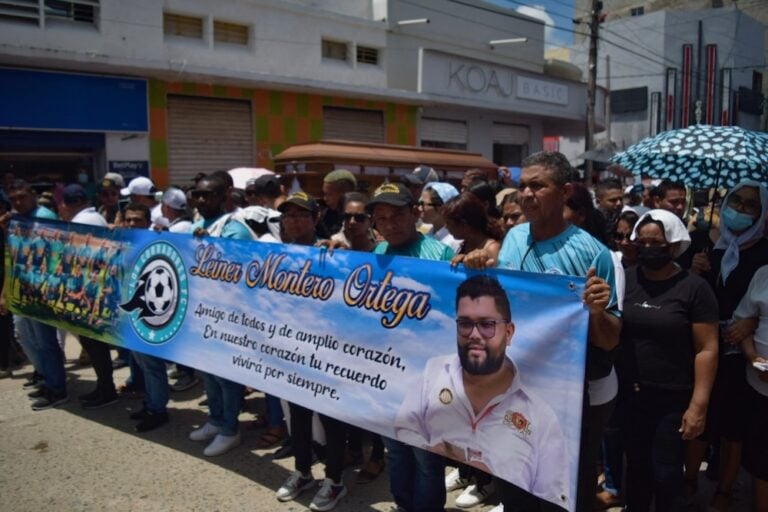(FLIP/IFEX) – On 10 May 2007, a group of journalists was intimidated when a non-commissioned officer of the national army fired his weapon above their heads to prevent their approaching the scene of an attack on an army convoy. The incident took place on the Alto Bonito highway, three kilometers from the urban centre of […]
(FLIP/IFEX) – On 10 May 2007, a group of journalists was intimidated when a non-commissioned officer of the national army fired his weapon above their heads to prevent their approaching the scene of an attack on an army convoy. The incident took place on the Alto Bonito highway, three kilometers from the urban centre of Tuluá in Valle department, in south-western Colombia.
The journalists were trying to investigate a bomb attack by the guerrilla group Fuerzas Armadas Revolucionarias de Colombia (FARC) against a Special Forces unit (Escuadrón de Fuerzas Especiales) of the army, in which 10 soldiers were killed.
After being prohibited access to the site for over three hours for reasons unexplained, the journalists, who numbered more than ten, were finally given authorization but as they approached the bomb scene, a soldier fired a round into the air, clearly warning the journalists to keep their distance. Other soldiers on the scene were as frightened as the journalists by the outburst. Fortunately, no one was injured.
General Mario Montoya apologized on behalf of the army to the journalists. “This kind of thing should not happen,” he stated, giving assurances that an investigation into the soldier’s conduct would be undertaken.
In a separate incident, on 12 May in Barranquilla, in Atlántico department in northern Colombia, numerous journalists were verbally and physically assaulted by members of the police as they tried to gather information on a murder case.
At approximately 2:00 p.m. (local time), “El Heraldo” journalist Isis Beleño arrived to the scene of the crime to investigate and was suddenly insulted by police officials, who tried to remove her from the area, even though she had not gone beyond the police tape marking off the crime scene.
The police resorted to pushing and punching the journalist. The same treatment was meted out to her colleague, photojournalist Johnny Olivares, and reporters Manuel Pérez Frutos and Saturnino Vásquez of the newspaper “La Libertad”, when they tried to prevent the police from harming Beleño.
Pérez Frutos said to FLIP that “the police display constant hostility toward the press, especially when we cover crime stories.” Other local journalists confirmed to FLIP that public security in Barranquilla is unstable. Some 25 homicide cases in two weeks have led to frequent contact between journalists and police and army, with the latter demonstrating an aggressive attitude toward reporters.
Coronel Jorge Gutiérrez, chief of the national police in Atlántico, assured FLIP that it is, in fact, the journalists who are hostile to the police. “They do not allow the officers to conduct their work.” Regarding the 12 May incident, Gutiérrez stated: “the journalists, including the girl, were rude to the officers; she even assaulted one of the officers”. Nonetheless, the police chief encouraged the journalists to file a formal complaint if they felt mistreated.
FLIP is worried by these latest incidents and the frequency of violations of press freedom. It is imperative that the police and army be trained to respect the media, and that journalists learn, in dialogue with police, how to avoid putting their lives in danger or compromising criminal investigations.
The responsibility of the police to maintain public order must not be used to justify disrespect for the work and safety of journalists, who also play an important role in society.


